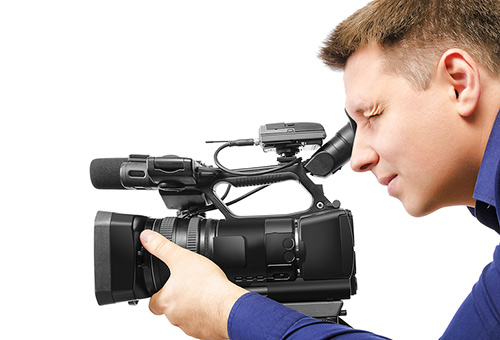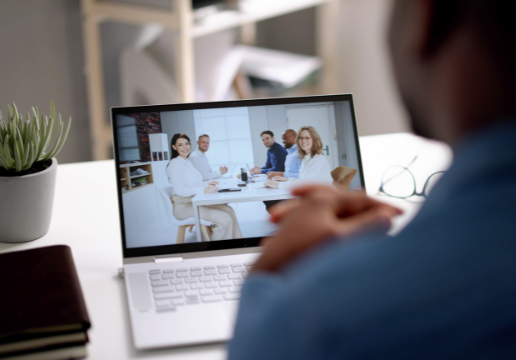The Importance of Legal Videography Has a Crucial Role in Contemporary Legal Practices
The Importance of Legal Videography Has a Crucial Role in Contemporary Legal Practices
Blog Article
Why Legal Videography Is Essential for Accurate Court Recordings
The role of lawful videography in courtroom settings can not be overstated, as it acts as a vital tool for maintaining the stability of court records. By capturing both spoken and non-verbal communication, it enhances the quality of witness statements and reflects the subtleties of court interactions. This comprehensive documents not only help in minimizing potential misconceptions however also sustains appellate reviews, therefore strengthening the judicial process. Nonetheless, the ramifications of incorporating legal videography right into conventional courtroom techniques raise vital concerns concerning its wider influence on the legal system. What might these effects entail?
Relevance of Visual Proof
In the realm of legal process, the relevance of aesthetic proof can not be overstated. Visual evidence acts as an effective device in developing facts, proving testaments, and enhancing the overall clearness of a situation. This kind of proof, that includes photographs, videos, and diagrams, can offer a concrete context that spoken summaries usually do not have, thereby offering juries and judges a clearer understanding of the situations surrounding a case.
Furthermore, visual evidence aids in the retention of info. Human cognition is inherently visual, and individuals are most likely to remember and comprehend information provided in an aesthetic layout. In the court room, this can be vital, as engaging visual evidence can persuade point of views and enhance the story offered by lawful reps.
In addition, using aesthetic evidence can lessen misconceptions and uncertainties that usually arise from verbal exchanges. By providing a straight depiction of occasions, aesthetic proof aids to eliminate subjective interpretations and cultivates a much more objective assessment of the realities. Consequently, the assimilation of visual evidence right into legal process not just reinforces the honesty of the judicial procedure yet also enhances the likelihood of achieving a simply outcome.
Recording Non-Verbal Hints
Making use of sophisticated videography strategies can dramatically enhance the capture of non-verbal signs during legal process. Non-verbal communication, consisting of facial expressions, body movement, and eye contact, plays a critical role in sharing emotions and intents that might not be explicitly specified in spoken statement. legal videography. Lawful videography employs high-def electronic cameras and tactical angles to make certain that these subtle hints are videotaped with clarity and accuracy
The capacity to analyze non-verbal habits can give valuable context to statements made throughout court sessions. A witness's unwillingness or self-confidence can be analyzed via their posture or gestures, potentially influencing the jury's understanding of reputation. Furthermore, making use of close-up shots can assist concentrate on an audio speaker's expressions, enabling an extra nuanced understanding of the testimony.
Additionally, integrating multiple video camera angles can produce an extensive view of interactions, highlighting dynamics between parties involved. This multifaceted approach not just boosts the precision of the court document yet likewise aids in protecting the integrity of the judicial process - legal videography. Ultimately, recording non-verbal signs via lawful videography promotes a richer, a lot more total representation of courtroom proceedings

Enhancing Testament Dependability
The reliability of testament can be substantially boosted through making use of high-grade lawful videography. Video recordings act as an objective tool that catches not just the talked words of witnesses but additionally the subtleties of their delivery, consisting of tone, pacing, and psychological expressiveness. right here This complex paperwork gives a more clear understanding of the witness's reputation and intents, which can be pivotal in legal process.
Furthermore, lawful videography minimizes the capacity for misinterpretations that may emerge from written records alone. When jurors can observe a witness's disposition and body movement along with their testimony, they are much better outfitted to evaluate the credibility and integrity of the proof presented. This visual context can enhance the testimonial narrative, making it a lot more engaging and reputable.
Furthermore, the visibility of a video clip recording can deter prospective variances in testament. Witnesses might be more careful in their statements when they understand they are being videotaped, bring about more accurate and honest accounts. Generally, top notch lawful videography boosts the honesty of testimony, ensuring that the court has access to a complete and truthful representation of the facts as this link conveyed by the witnesses.
Supporting Appeals and Reviews
Legal videography plays an essential role in supporting appeals and reviews by providing a comprehensive visual document of court room process. This aesthetic paperwork catches not only the spoken words of witnesses and attorneys but also the subtleties of body movement, intonation, and court dynamics. Such aspects can be crucial in recognizing the context of testaments and disagreements provided.
In the appellate process, where the emphasis gets on errors of law and step-by-step justness, a video document can work as an important device for appellate courts. It allows judges to assess the initial trial context, ensuring that choices are based on a complete understanding of the process. The capability to visually analyze the attitude of witnesses or the interactions in between celebrations can expose understandings that composed transcripts might neglect.

Furthermore, legal videography can help in clarifying uncertainties in testimonies or step-by-step rulings, consequently strengthening the basis for an allure. By providing a trusted, objective account of what click now taken place in court, legal videography not just sustains the integrity of the lawful process however additionally empowers all events involved to make educated choices regarding their situations.
Enhancing Court Room Processes
Enhancing courtroom effectiveness, lawful videography simplifies processes by offering instant accessibility to aesthetic documents of process. This technology allows judges, lawyers, and courts to take another look at crucial statement and evidence, making sure that all events have a clear understanding of the instance. By recording the subtleties of spoken and non-verbal interaction, videography improves the document, making it easier to grasp the context and weight of testimonies.

Additionally, video clip recordings can help with remote engagement in hearings, permitting greater adaptability in scheduling and engagement, which is especially valuable in complicated cases entailing multiple stakeholders.
Verdict
Finally, lawful videography plays an important duty in making sure accurate court recordings by supplying important aesthetic evidence that catches both spoken and non-verbal communication. This technique enhances the integrity of testimonies, sustains appellate testimonials, and improves court room processes. By promoting a comprehensive understanding of court characteristics, legal videography eventually adds to much more fair judicial end results, reinforcing the honesty of the legal system and helping with educated decision-making.
Report this page